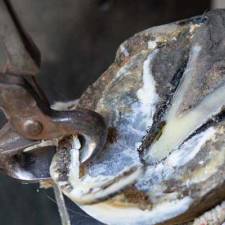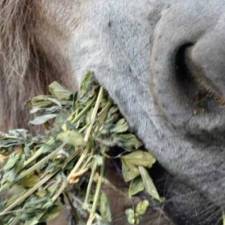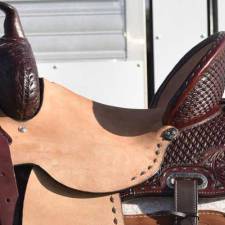
Recently one of Horsemen’s Laboratory clients asked about the accuracy of our testing methods. Horsemen’s Laboratory was established in 1992 and since then we have done over 46,000 samples. Over the years we have sent samples to the University Of Illinois School Of Veterinary Medicine Department Of Parasitology and to East Tennessee Clinical Research, Inc., a very competent laboratory that does extensive testing and research in the field of parasitology, owned by Craig R. Reinemeyer, DVM, PhD, Dipl. ACVM. The results found at all three laboratories were very comparable; placing each horse in the same category as far as egg shedding was concerned.
There are several factors that can affect the accuracy of the results of a sample. The most common generally occurs when the sample is collected. To help address this we have printed instructions in red stating “to fill the container completely” right on the plastic bag that the container is sent in. Many times we receive the sample and it consists of only a few small twigs of used hay and a couple of used oats.
There are 2 reasons we need the container filled completely and packed firmly.
I. Is to insure we have plenty of sample to check.
II. When packed firmly it reduces the space for oxygen in the container, which the eggs need for larvae to develop. This preserves the eggs so they are much easier to find and count in the sample.
The fresher the sample is when it is mailed also may improve the results. Therefore, we recommend trying to collect samples on Monday and dropping them in the mail the day they are collected. We receive 80-85% of samples within 3-5 days of when they are mailed. When samples take longer and are not packed firmly the eggs have a tendency to hatch and we find the larvae swimming in the solution when viewing it on the counting chamber. However, the samples we receive that are packed firmly, the eggs have only developed slightly if at all. Occasionally it takes 10-14 days for samples to reach Horsemen’s Laboratory and if they are packed firmly the larvae in the eggs again will appear only slightly developed, while the samples packed less tightly will have dead larvae floating in solution on the counting chamber. Since each egg only produces one larva we just count the larvae.
As stated there are many factors that affect the accuracy of doing fecal eggs counts, it is not an absolute or precise science. However, it is the best evaluating system we have for determining the presence of intestinal parasites (worms) in live horses. It is also the best method of measuring pasture and environmental contamination that can lead to worm transmission from horse to horse. Therefore, it is the method of choice to evaluate individual horses and herd worm control programs. It is also the method that has been used to evaluate treatment of worms in horses and other livestock for many years. It is also far better than guessing the effectiveness of your horses’ worm control program.















































